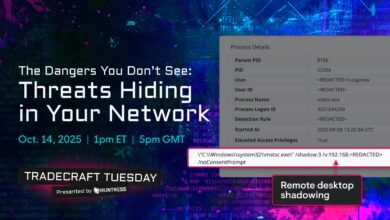MonsterRAT: Stealthy Malware Threatens Windows Systems

▼ Summary
– A new malware called MostereRAT is being delivered through phishing emails targeting Japanese Windows users, giving attackers full control of infected systems.
– The malware uses advanced evasion techniques including being written in the rare Easy Programming Language and employing multiple stages to hide malicious activity.
– It disables security tools, blocks antivirus traffic, and establishes secure communications with its command server using mutual TLS encryption.
– MostereRAT escalates privileges by mimicking the TrustedInstaller account and creates persistence through hidden administrator accounts and system services.
– Security experts recommend reducing user privileges, implementing application controls, and restricting automatic downloads to defend against such threats.
A sophisticated phishing operation has been identified distributing a previously undocumented Remote Access Trojan known as MonsterRAT. This malicious software specifically targets Microsoft Windows systems, granting cybercriminals full administrative control over any infected device. Security analysts emphasize that the threat employs a multi-stage infection process designed to bypass conventional security measures.
What distinguishes this campaign is its reliance on the Easy Programming Language (EPL), a Chinese-developed scripting tool seldom observed in cyberattacks. The malware utilizes multiple layers of obfuscation to conceal its activities, including the ability to disable security tools, interrupt antivirus communications, and establish encrypted channels to its command servers using mutual TLS authentication.
The attack begins with convincingly crafted phishing emails disguised as routine business correspondence, primarily aimed at Japanese recipients. Clicking a link inside these messages triggers the download of a Word document concealing a compressed archive. Users are then prompted to open an embedded executable, which initiates the infection sequence.
Once launched, the payload decrypts its components and installs them within the system directory. It creates several services to maintain persistence, some operating with SYSTEM-level privileges for broad access. Before terminating, the malware displays a deceptive error message in Simplified Chinese claiming file incompatibility—a social engineering tactic intended to confuse users and potentially encourage further sharing.
According to cybersecurity professionals, the initial reliance on phishing makes browser security a vital defensive layer. Implementing policies that restrict automatic downloads and reduce user privileges can help mitigate the risk of privilege escalation.
MonsterRAT incorporates multiple techniques to neutralize protective measures. It can halt Windows Update services, terminate antivirus processes, and prevent security applications from contacting their update servers. The malware also escalates privileges by impersonating the highly authoritative TrustedInstaller account.
Once entrenched, the Trojan enables a wide array of malicious activities. These include capturing keystrokes, harvesting system data, retrieving and executing additional payloads, creating hidden administrator accounts, and deploying legitimate remote access tools such as AnyDesk, TightVNC, and RDP Wrapper.
Researchers note that portions of the malware’s infrastructure were previously associated with a banking Trojan reported in 2020, indicating an evolution in tactics by threat actors seeking to evade modern defensive systems. Reducing local administrator rights and enforcing application controls remain among the most effective strategies for limiting the impact of such infections.
(Source: Info Security)




